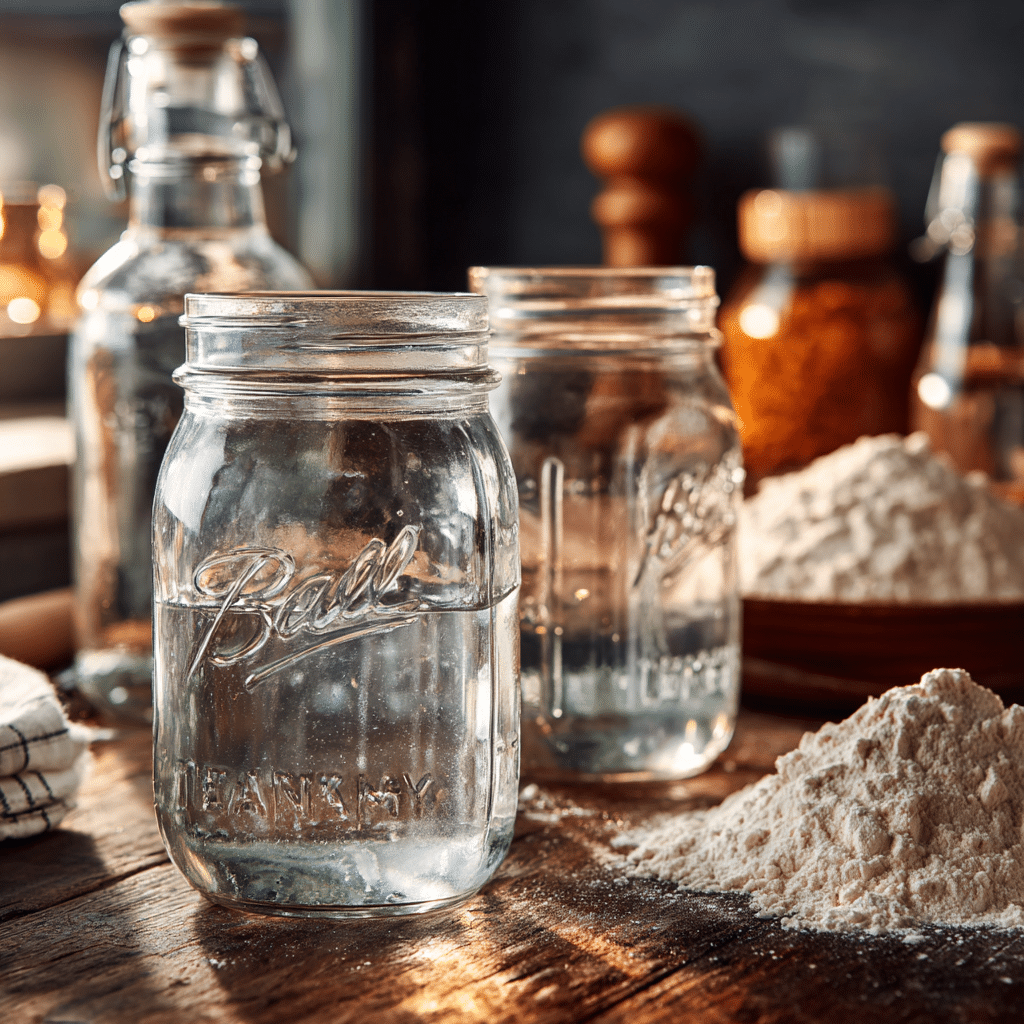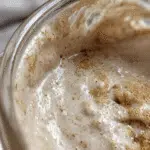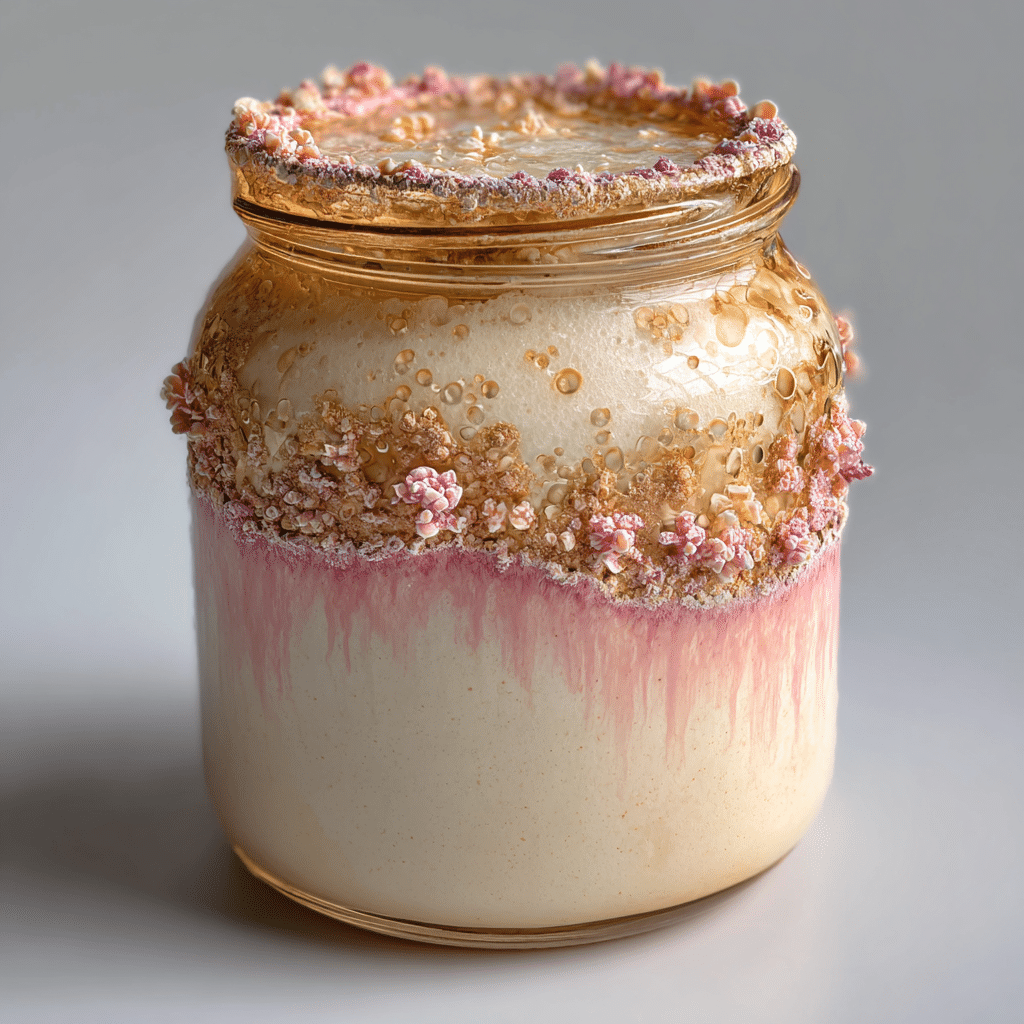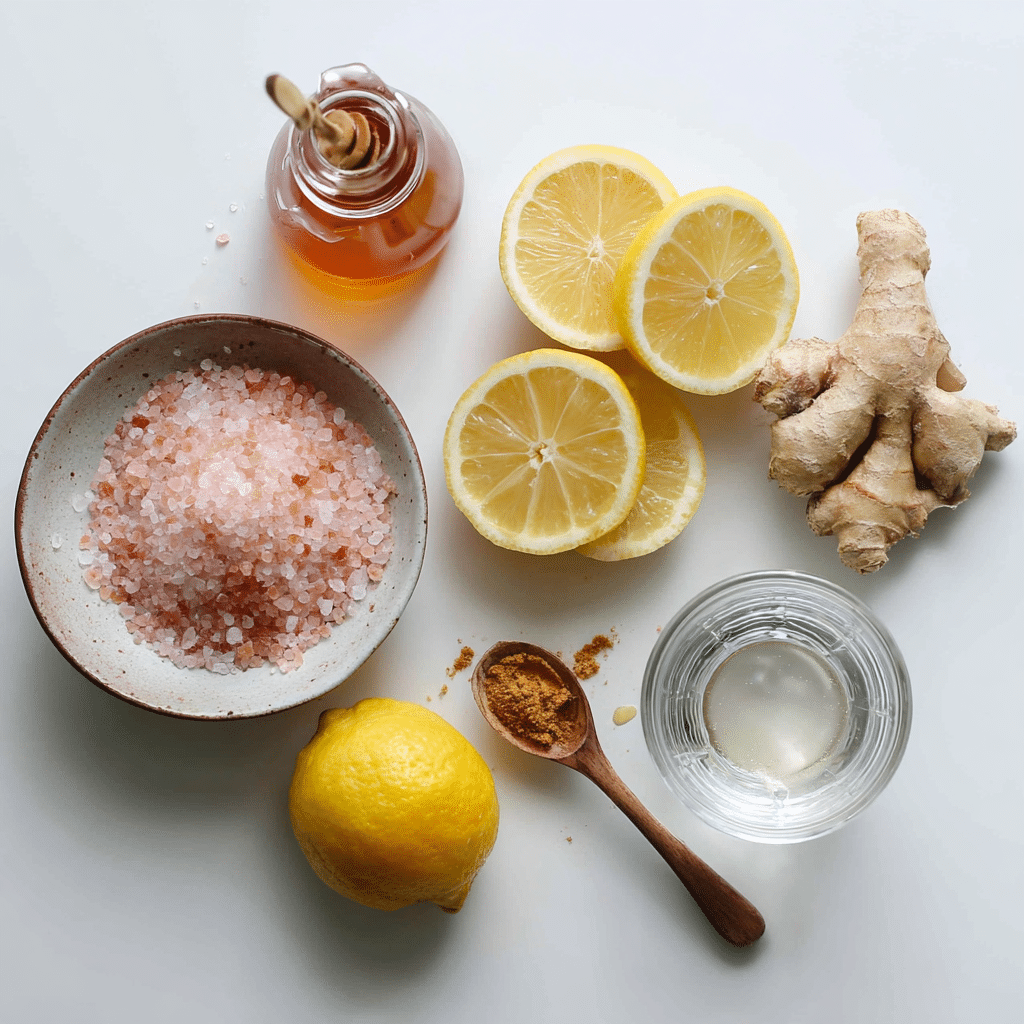There’s nothing more disheartening than peeling back the lid of your sourdough jar and spotting something… fuzzy. Maybe it’s a streak of orange or a suspicious patch on the rim. Is your starter ruined, or just quirky?
In this guide, you’ll learn how to identify a moldy sourdough starter, when to throw it out, how to avoid mold in the future, and what to do if your bread goes bad. Whether you’re new to sourdough or a seasoned fermenter, this article will help you keep your culture safe, and your baking joyful.


Moldy Sourdough Starter: 5 Warning Signs You Must Never Ignore
- Total Time: 5
- Yield: 1
- Diet: Vegan
Description
Avoid a moldy sourdough starter with proper care, storage, and inspection tips. This guide helps you recognize, prevent, and respond to mold confidently.
Ingredients
Clean glass jars
Filtered water
Unbleached flour
Dry cloth or loose lid
Clean spoon
Optional: dried sourdough starter backup
Instructions
Inspect your starter visually and smell for signs of spoilage.
If you see pink, orange, or fuzzy mold, discard the starter immediately.
Feed your starter using equal parts flour and water in a clean jar.
Use filtered water to avoid chlorine that harms the culture.
Store the starter with a loose lid or cloth in a cool, dry place.
Cool bread fully before wrapping in cloth or paper for storage.
Dry a small portion of starter on parchment as a backup.
Notes
Always err on the side of caution if mold appears.
A moldy sourdough starter should not be salvaged if it shows colored fuzz.
Clean tools and regular feeding are your best defense.
- Prep Time: 5
- Category: Sourdough
- Method: No-cook, Guide
- Cuisine: Global
Nutrition
- Serving Size: 1
- Calories: 0
- Sugar: 0g
- Sodium: 0mg
- Fat: 0g
- Saturated Fat: 0g
- Unsaturated Fat: 0g
- Trans Fat: 0g
- Carbohydrates: 0g
- Fiber: 0g
- Protein: 0g
- Cholesterol: 0mg
Keywords: moldy sourdough starter, sourdough mold prevention, sourdough care, discard sourdough
My Moldy Clementine Moment
My first mold scare with Clementine
Hi, I’m Marlene Quinn, and I’ll never forget the first time I almost tossed my starter. Clementine had been bubbling away for weeks, and one morning, I saw a fuzzy patch near the jar’s rim. My heart sank. Was it mold? Was she done?
That moment took me back to my first-ever starter. Back then, anything that smelled funny went straight to the trash. I didn’t know that not every strange look or smell meant I had a moldy sourdough starter. Today, I inspect carefully. If I’d trusted my instincts sooner, I wouldn’t have wasted so many good cultures.
Not every crust on the rim is mold. A little flour buildup or hooch isn’t a problem. But a moldy sourdough starter often has colored fuzz and a rancid smell.
What does mold on sourdough starter look like?
A healthy starter might develop a dark liquid (called hooch), and some dry bits along the sides. These are signs it’s hungry, not spoiled.
But if you see pink, orange, green, or white fuzz, or it smells like rotten meat or chemicals, you’re likely dealing with a true moldy sourdough starter.
Want help recognizing the signs? Read up on clever sourdough techniques and discover creative ways to enjoy your loaves once they’re baked.

When to Toss , Knowing the Signs
Can I still use moldy sourdough starter?
If there’s any visible fuzz or a harsh, foul smell, stop. Mold spores go deeper than the surface. You can’t just scrape off the top and hope for the best.
A good rule: if you have to ask whether it’s a moldy sourdough starter, it’s probably not safe. I learned the hard way with a starter that looked okay but smelled off. I fed it for two days. Then the fuzz came back, worse than before.
However, if the top has only hooch or a dry crust, and it smells tangy, you’re probably fine. Just stir, feed, and watch.
How can you tell if sourdough starter is bad?
Use your senses. A healthy starter smells yeasty and acidic. A spoiled one smells like acetone, rotten meat, or moldy cheese.
Also, look for separation that doesn’t mix, strange texture, or streaks of color. Pink streaks are a sure sign of a moldy sourdough starter, and you should throw it away immediately.
Curious about how sourdough affects your gut? Explore our sourdough health guide and learn whether it contains gluten.
Why Mold Happens , And How to Prevent It
Why did my sourdough bread get moldy?
Even if your starter’s fine, your bread can still mold fast, usually due to poor storage. Wrapping warm bread or sealing it in plastic traps moisture and encourages mold.
Contamination matters, too. Once, I used a dirty spoon, and within 48 hours, both my loaf and starter were gone. A moldy sourdough starter can happen from something that simple.
If you live in a humid place, you’re at higher risk. When I visited a bakery in Fairbanks, airflow and dry tools were key. Learn about that experience here.
Storage and feeding habits that prevent mold
Avoid a moldy sourdough starter by feeding it consistently and storing it in a clean, dry jar. Use filtered water, chlorine in tap water can disrupt the microbial balance.
Never store starter in a sealed airtight container. It needs to breathe. As for bread, always let it cool completely before wrapping it in paper or cloth.
Preventing a moldy sourdough starter comes down to good hygiene and regular care. For more, explore clever sourdough routines or get inspired with serving tips.
Rescue or Restart , Making the Call
When should I throw away sourdough starter?
Some signs are clear: if there’s pink, green, or white fuzz, or the jar smells like garbage, it’s time. A moldy sourdough starter is not something you can rescue once it’s fully contaminated.
I once saw a pink streak and tried to save it, bad idea. Mold came back stronger, and I had to start over. That’s when I realized: letting go is part of baking.
Need a break while you reset? Try Izzio Sourdough Bread or experiment with low FODMAP sourdough options.
Can you revive a starter with mold?
If the mold is only on the dried crust above the dough, some bakers scrape and save. Personally, I don’t risk it. Mold spreads invisibly, and it’s not worth your health.
My advice? Dry a spoonful of healthy starter on parchment and store it airtight. That way, if you ever run into a moldy sourdough starter, you’ve got a clean backup.
Need help rebuilding? Check out gentle sourdough ideas or browse starter recovery tips.

Conclusion: Let Mold Teach You, Not Defeat You
Discovering a moldy sourdough starter can feel like a big setback, but it’s also part of the learning process. Every baker deals with it at some point. It doesn’t mean you’ve failed; it means you’re growing.
Sourdough is about patience and intuition. Keep your jar clean, your feedings regular, and your curiosity alive. If your starter ever takes a turn, start fresh. You’ll be surprised how quickly you bounce back, with even better loaves on the other side.
FAQs About Mold in Sourdough Starters
Can I still use a sourdough starter if it has mold?
No. Any visible mold, even on the rim, means the culture isn’t safe.
How can you tell when a sourdough starter has gone bad?
Rotten smells, fuzzy patches, pink streaks, or slimy texture all indicate it’s time to toss.
When should I throw away my starter?
At the first sign of mold or if it fails to rise after multiple feedings. Better safe than sorry.
Why does sourdough bread mold quickly?
Usually due to storage. Always let your loaf cool fully and wrap it in paper, not plastic.

